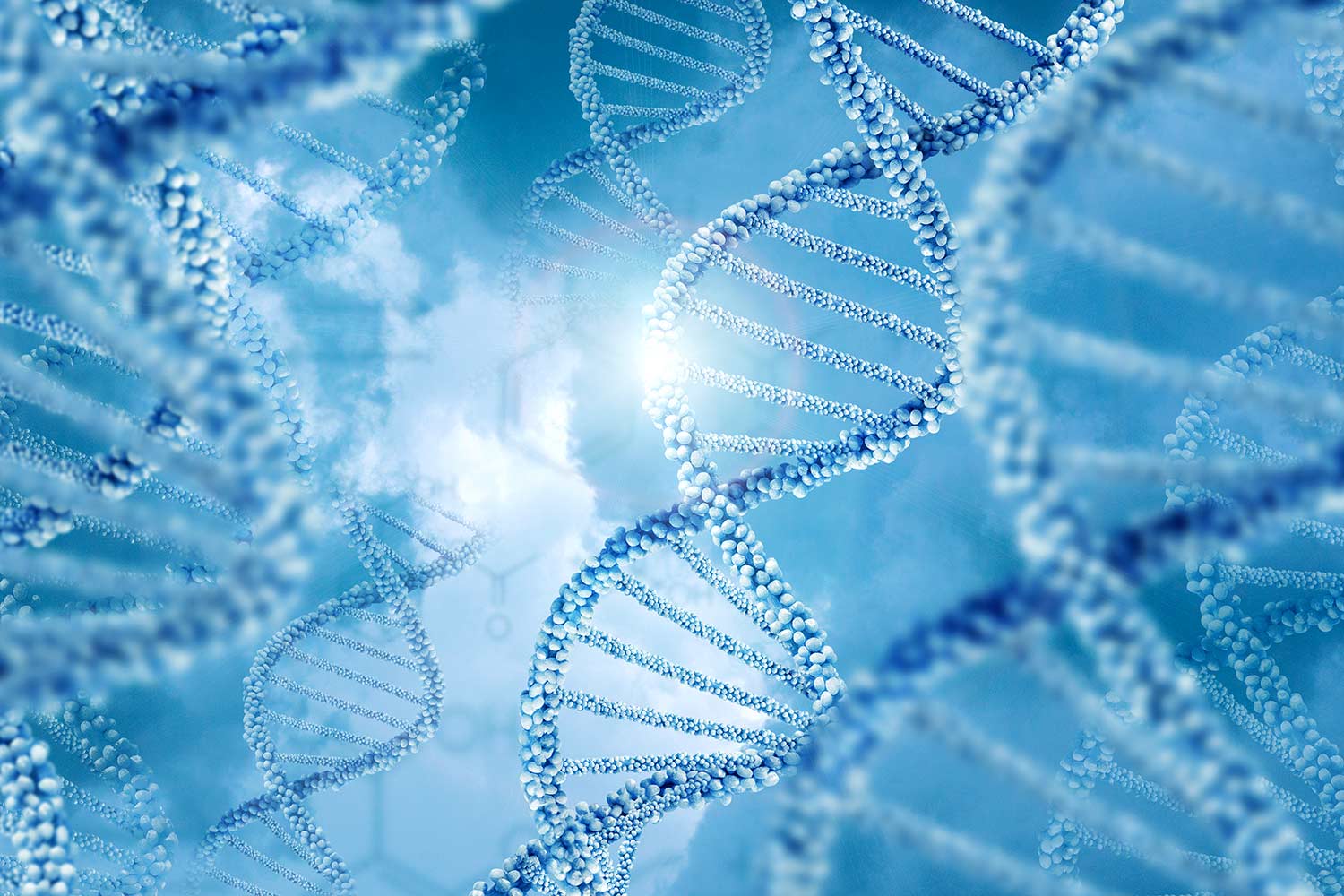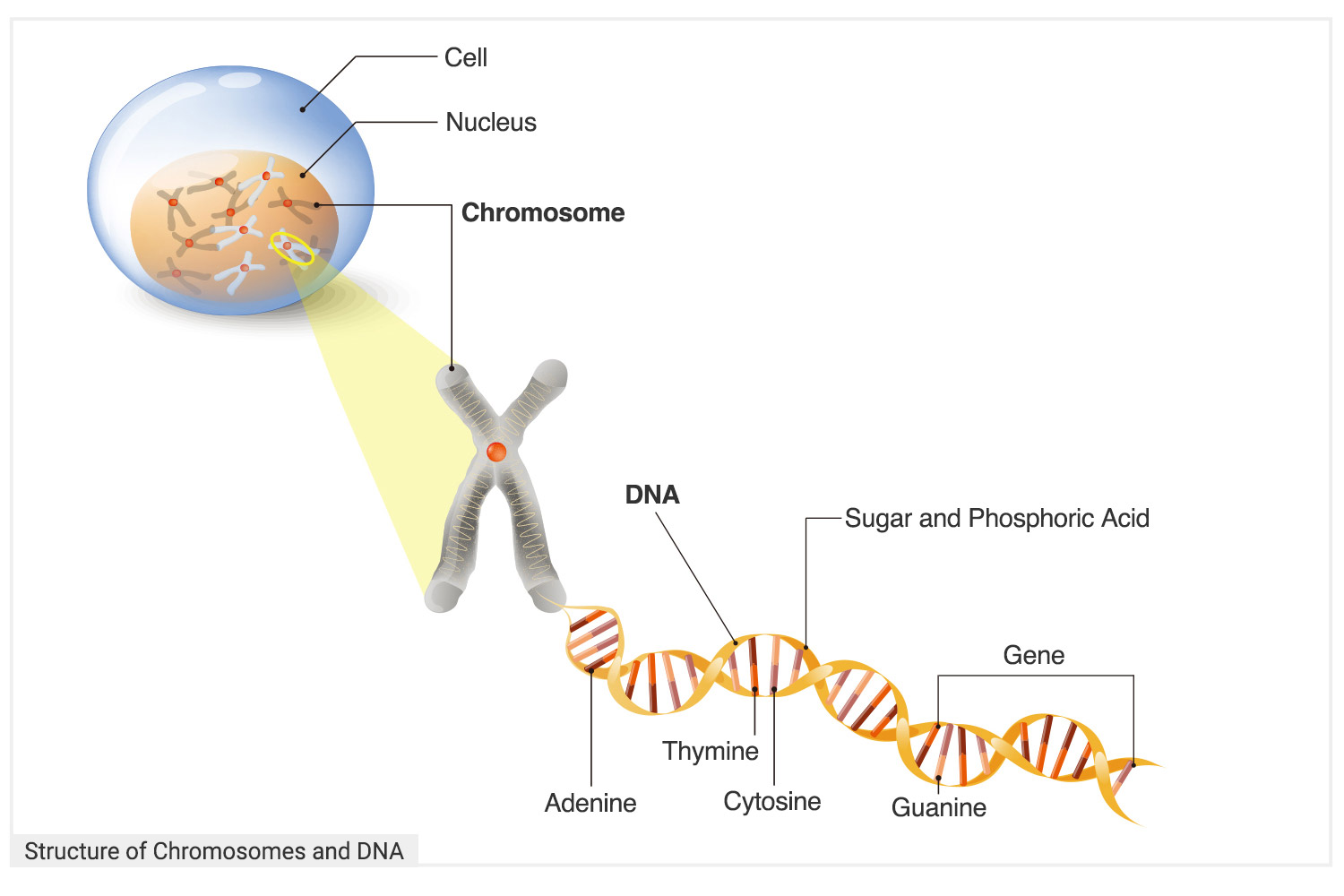
“Today we are learning the language in which God created life. We are gaining ever more awe for the complexity, the beauty, the wonder of God’s most divine and sacred gift.”
On June 26, 2000, an initial draft of the human genome was released. The then U.S. President Clinton left the statement above while announcing the completion of the initial draft of the human genome project which had been the biggest issue in the field of science for the last decade of the 20th century. Let’s look into the mystery of the human genes which even brought awe to many people.
Gene, the key of mystery
Genome is a compound word of gene and chromosome, indicating all genetic information that a living organism has. The completion of the initial draft of the human genome meant that the complete blueprint of our body has become visible. It gave a great expectation to people that it will play an epoch-making role in the field of life science such as making it easy to invent new medicine, predicting diseases of future, or preventing incurable diseases through gene treatment. Dr. Francis Collins, who led the Human Genome Project, called this the “Language of Life.”
Each human cell contains 23 pairs of chromosomes. A chromosome is a DNA molecule containing genes, coiled up finely together like a skein of thread. It differs, depending on individuals, but in each human body every cell has the same sets of chromosomes. If all the x-shaped chromosomes are unraveled, the DNA is over two meters long, but this long DNA is folded very finely inside a cell nucleus that is only 4 ㎛.
DNA which makes up genes is a very small material whose structure was barely discovered in the 1950s. However, its shape is amazingly elaborate. The DNA molecule is shaped like a spiral ladder composed of two chains that form a double helix, and it stores genetic information with the base sequences which are the steps of the ladder. There are four bases: adenine, thymine, cytosine, and guanine. They are normally called by their first letters: A, T, C, and G. The A and T, and C and G are complementary because they are always combined in pairs. For this reason, even if a DNA is cut in half and one side is removed, it can be restored because the information is still left on the other side.

The total length of the human genome is over 3 billion base pairs. It will take over 95 years even if you read each one every second without taking a break day and night. If you print all the sequences of DNA bases with each A4 page having 2,000 characters, it would print out about 1.5 million pages, and the stack of all the pages would be approximately 225 meters tall.
The oldest information storeroom
The way DNA stores genetic information is very similar to the way computers store digital information. Computers operate in binary which is a numeric system that only uses two digits: 0 and 1. It’s because computers acknowledge the state of the current not flowing as 0 and the state of the current flowing as 1. DNA has all the genetic information with four bases, which makes it similar to quaternary, and allows compatibility with various information storage media.
Digital data is recorded on media such as CDs or hard disks. However, it has a flaw: It has to be re-recorded regularly because a damage of a significant portion is inevitable after decades pass. In addition, more powerful data storage devices are needed as a tremendous amount of data is produced in modern times. It is predicted that the amount of digital data will be approximately 44 zettabytes in 2020. This is a massive figure that is equivalent to 44 trillion gigabytes.
On the contrary, DNA is a stable material that can preserve the stored genetic information even for tens of thousands of years. One gram of DNA has an astronomical number of bases that is approximately 1021. When converted into memory, it is equivalent to 1 billion terabytes. A tremendous amount of information can be stored safely for a very long time in a space as small as a molecule.
To supplement the flaws of storage method of digital information, there is currently active research on whether or not DNA can be used as a means to store information. The European Bioinformatics Institute [EBI] announced that it successfully encoded 739 kilobytes of various types of data such as voice, image, and text files into a DNA code by converting it to base sequences. They were also able to reconstruct the original files.
DNA, the code of life
All living organisms on the earth live and give life to their descendants through the common language called DNA. How do the DNA codes of the bases, which don’t seem possible to be understood, make our bones and flesh? DNA, the blueprint of proteins which compose our body and help activities of life, makes copies to provide genetic information to the protein building machine. Since DNA has important information that shouldn’t be damaged, it doesn’t move out of the nucleus. Instead, it only copies necessary parts and sends them out.
You can easily imagine how DNA is copied when you think of a broken zipper that is open in the middle. After the DNA bases are separated, it is copied onto a strand of ribonucleic acid [RNA] by enzymes. This is called messenger RNA [mRNA]. DNA is like the original book that cannot be checked out, and mRNA is like copies of some pages of this original book. mRNA which is a copy of DNA moves out of the nucleus and into the mouth of ribosomes which are protein building machines.
Ribosomes combine appropriate amino acids according to mRNA’s genetic information, and produce protein. The order of base sequences is the genetic information. Three base sequences function as a code that appoints certain amino acids. For example, DNA’s base sequence ATG announces the beginning of protein synthesis and brings an amino acid called methionine.

Since three bases come together and appoint one amino acid, it results in making a total of 64 codes. It is more than 20 kinds of amino acids that are ingredients of protein. So sometimes, different codes appoint the same amino acid. DNA’s base sequences—GGG, GGC, GGA, and GGT—encode the same amino acid called glycine. Various types of protein are made this way and decide functions and nature of the cell.
On April 14, 2003, the final announcement was made that the human genome map was finally completed with 99.99% accuracy. However, scientists who were convinced that they had discovered the secret of all living phenomena were puzzled by an unexpected result while interpreting the completed DNA base sequences. They had anticipated that there would be over 100,000 genes, but there were only about 30,000, and about 98% of it was information whose meanings couldn’t be found when it comes to making protein. They thought that they had found the answer, but it was like getting another test.
Dr. Robert Waterston who participated in the project said, “We have before us the instruction set that carries each of us from the one-cell egg through adulthood to the grave. It is written in an arcane language and encompasses a complexity that we are just beginning to understand.”
This DNA, which is called junk DNA due to its continuous research, is anticipated to play a certain role in the phenomenon of life, but no detailed mechanism has been discovered accurately yet. There is also active research to investigate functions of individual genes and to reveal the structure of protein made from DNA so that it can be applied to the treatment and prevention of diseases. The “postgenomic era” to interpret the language of life contained in DNA has begun.
For the past 400 years, the history of biology has continued to develop. Starting from anatomy, we’ve studied physiology, embryology, biochemistry, and now we are at a point where we are looking into cells, read and interpret the information contained in genes. Life science which has stepped forward through the completion of the Human Genome Project seemed to have conquered the human genes completely. However, the more we learned about the DNA of double helix which seemed very simple, the harder it became to understand.
Many people make a mistake to understand nature and humans only with scientific knowledge and judge them as some simple things. However, science is proving the existence of the Creator through the principle of all things and the complexity and perfection of order contained in them.